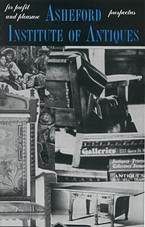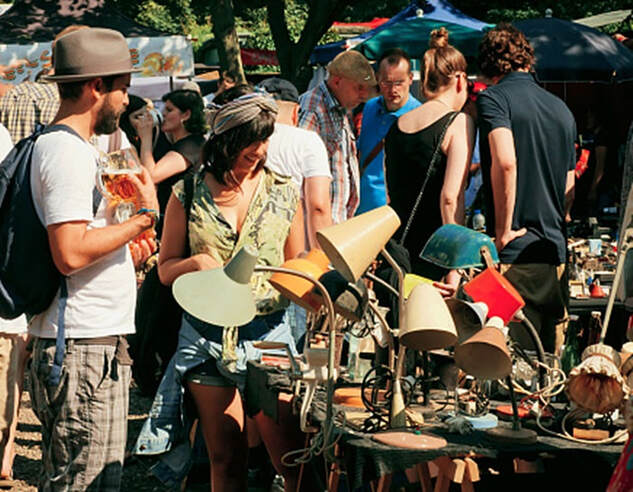 New York - As was noted earlier this year in the most recent Global Home Furnishings report, produced by ResearchandMarkets.com, antique and vintage furniture has officially become the hottest selling trend in today's decorative arts marketplace. While the ride to the summit's top has been great for most of those in the industry, it's also raised a rather important follow-up question related to its current popularity. Namely, has the industry's newfound fame been a result of the public's seemingly sudden interest in second-hand and vintage items, or has a younger generation of style mavens and vintage curators been responsible for putting the antique and vintage scene back on top of the decorative arts podium? For some, it's likely to have been a natural convergence of events, or perhaps even a timely combination of both. However, what many in the antique and vintage community really want to know - beyond just the who or why behind the industry's recent upswing in popularity - is the what. Or more precisely; the type of items dealers and sellers are now looking to purchase when it comes to stocking their businesses with today's latest home décor trends. 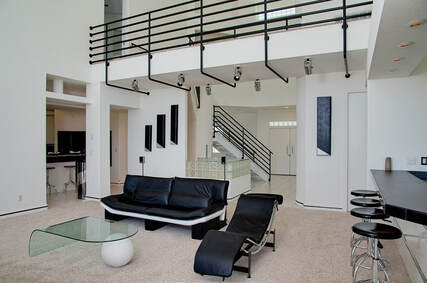 1980's Miami Vice Style Returns 1980's Miami Vice Style Returns Carla Leland and her son Trey believe that today's current crop of young dealers have never been more influential when it comes to setting style trends - and she should know - as someone who not only runs a ten-thousand square-foot vintage business along with her tech-savvy son, Carla also keeps her finger on the pulse of en-vogue movements as a managing partner at one of Manhattan's hippest Upper East Side interior design firms. Leland says that curating their businesses based on what they see younger dealers stocking has become almost standard fare. "Last year we started to see a lot of vintage items in the Deco style," she said, "but Trey noticed that it was more of a Miami-based Deco style from the 80s, not the 1930's." Leland says that her son's friends from South Florida had been buying up anything from estate and garage sales that was vintage 1980s (think Sony Crockett and Miami Vice), because of the cool factor. "I really wasn't even aware there was a particularly attributable South-Deco furniture style," she claims, "but Trey had all these modular tables with Art Deco influences that were done in gold and mirrors shipped up to our shop, and we literally sold them out in five days." Leland says that black-lacquer bar and bedroom cabinets from this era have also been big sellers. "I've put my son's friends on retainers - hunt down as many of these cabinets as you can - and I'll pay handsomely," she quipped. As for where most of the pieces are going, Leland acknowledges that the majority are probably headed to condos or modern apartments. "It's definitely a young persons game," she says, "they're buying them, selling them, and in so doing, setting the trend." While the notion of a picker being a moderator of changing tastes and styles may seem like a bit of an incongruity when paired against the accepted image of the shambolic loner hoisting leftovers onto a passed-its-prime truck, nothing could in fact be further from the truth when it comes to today's finders of the past. At least according to Art Hanson, who's ability to see the beautiful (and desirable) from the banal, are all part of what he believes makes his approach to business such a success. "At one point in time, dealers would give pickers a list of what they wanted," says Hanson, "but today, many of the younger pickers like myself are actually helping older dealers by suggesting the inventory they should be stocking, rather than what they want to be stocking." Hanson believes that his travels to literally thousands of shows, fairs, flea markets and estate sales across the country are what make him an excellent arbiter for what's popular, and more importantly, for what's selling. "I've seen first-hand what people are buying," says Hanson, "so finding that common denominator isn't that hard when you see it over and over again." Hanson's knack for understanding what's hot in a current market isn't based on mystique, but practiced experience. "I'm probably that first wheel in the home décor cycle," he says, "I buy what I see selling, and in turn resell that to dealers, who in turn do the same to the public." According to Hanson, Mid-Century still does well at most locations, but he says he's noticed a distinct move towards Boho and softer lines with younger buyers at larger urban events. "They're modded out," he chuckles, "like someone who's sat for too long on one of those uncomfortable MCM sofas." Hanson says he can still find decently priced wicker and rattan pieces, but the tides are beginning to shift. "Two years ago, I could literally pick that stuff for free," he says, "now I'm getting the side-eye from sellers at estate sales who are tweaking to it's growing popularity." 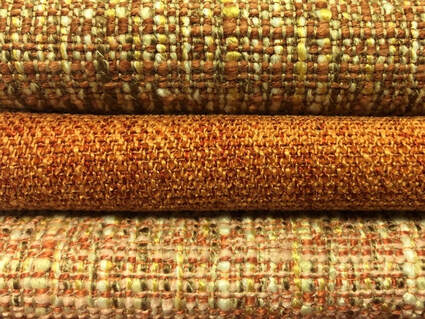 Original Vintage Bolts Of Earthy Fabrics Are Trending Original Vintage Bolts Of Earthy Fabrics Are Trending For the rest of us, it's mostly just a matter of turning online to see what's really hot, and by extension, who's promoting it. Checking the latest posts on DIY blogs and Instagram groups related to the decorative arts, reveals in relatively short order what's selling simply by the number of private DM (Direct Message) requests that will often appear under an item listed for sale. Pam Harris, a twenty-something, who's digital exposure includes, Instagram, Etsy, and a host of other sites, lists herself as a 'vintage influencer,' and a 'purveyor of up-and-coming styles.' Harris says that although she's only been in the business a few years, she thinks she has a pretty good bead on her generations style and the things they want. "I started out buying vintage clothes," she says, "but soon added all sorts of old textiles from the the 60s, 70s and 80s - especially bolts of fabric with crazy design patterns that reflected the decade." Harris says that led to a number of interior designers contacting her about what was selling. "They'd ask all sorts of questions about who was buying what, and how long it had been selling it for," she says. For Harris, it soon became apparent that the information she was giving out freely, could instead be monetized through a number of different online ventures. "After a while, these same people started to not only follow me, but became some of my best customers." Today, Harris says she fields questions about rising trends, and takes orders from all over the world, and has grown to such an extent that she's purchased a small building to store all her vintage materials. "Warm fabrics, oversized floral prints, and dramatic heavy-draped curtain fabric from the 1980s are all making a comeback," she says, "especially with younger clients who are reupholstering chairs and sofas they're often inheriting from parents or relatives." Jason Hodge believes it's more of a symbiotic relationship when it comes to the chicken and egg theory about who's responsible for initiating trends. Hodge, who's been a west-coast dealer for the last twenty years, thinks that it's definitely young people who generally set the trend-table. "When Mid-Century started," says Hodge, "most of my customers were in their mid-thirties. Today, I'm getting kids in their mid-twenties who are coming to me with very specific requests." Hodge also notes that when he used to frequent some of his favorite west coast flea markets (back-in-the-day), the vendors were generally much older than him. Not so today he says. "I'm forty, but most of the kids I see selling and buying to each other now are pretty much the same age." Hodge believes that makes it a bit easier to figure out what to stock up on, since there's a good chance that today's young folks will likely become his long-term customers in the near future. In the past, trends were usually slow to move from flea market popularity to widespread consumer acceptance because of the age disparity that often existed between buyer and seller, but that simply isn't the case anymore says Hodge. "I think there's enough young people now in the business that they're no longer just an anomaly, but have in fact become the new core of today's antique and vintage community. Do I think they're setting today's style trends? I'm not sure," he says, "trendspotting can be a tricky business for any demographic, but I certainly wouldn't bet against them." - A.I.A. Staff Writers 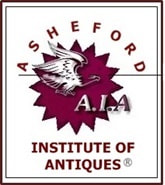 NOTE: For readers seeking more information about the Asheford Institute Of Antiques distance-learning program on professional-level appraising, the study of antiques, collectibles, vintage and mid-century modern items, please click here to visit the school's Home Page. Should you have additional questions about the Asheford program, you can also write to the school at: info@asheford.com or call the Registrar's Office toll-free at: 1-877-444-4508. |
AIA StaffWe're providing our students and reader's with the latest breaking news on events and happenings that we think might be of interest to both collectors and dealers alike. Including changes within the world of antiques, vintage, collectibles and appraising that might just have an effect on your bottom line. We're also interested in hearing from you - so if you've got a great newsworthy story, let us know, and you just might find it here! Archives
July 2024
CategoriesLegal Disclaimer: Extraneous opinions, statements and comments made by individuals represented within these posts do not necessarily reflect those of the Institute. The publication naming of specific business entities, organizations, and concerns, contained herein, in no way represents an endorsement or recommendation of services or products by the Institute. Publicly identifiable information contained herein (including, but not limited to contact information), has been intentionally limited where possible, due to privacy and legal concerns related to the digital dissemination of information through online means. All views expressed herein are those of their respective owners. The Institute is in no way responsible, financially or otherwise, for the accuracy or validity of statements contained within published posts from sources that originate and appear outside of the written and expressed views of those submitted by the Institute.
|


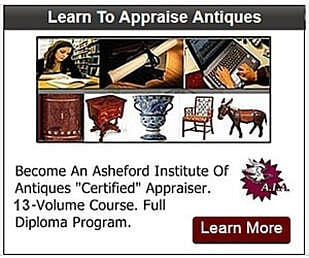
 RSS Feed
RSS Feed
